Pakistan Monument Islamabad – A Tribute to Our Brave Hearts
The beautiful Pakistan Monument, situated at the western viewpoint of Islamabad’s gorgeous Shakarparian Hills, symbolizes Pakistan’s rich history and cultural legacy. This masterpiece of architecture honors the martyrs who gave their lives in defense of the nation and stands for the nationalism of the Pakistani people.
This Monument in Islamabad was inaugurated in 2007 and is composed of two parts. A massive monument in the form of flower petals is on one end. It illustrates the historical occurrences that resulted in the formation of our country. On the other end lies the Pakistan Monument Museum, which is home to Islamabad’s only wax museum.
The Museum covers Pakistan’s early history, liberation fight, birth, and most significant modern-day accomplishments. Along with a conference room, reference library, verbal archive, and auditorium with a capacity for sixty-two (62) people called Panorama Hall, the PMM features additional amenities.
History of Pakistan Monument Museum
Pervez Musharraf, a former president of Pakistan, was the one who first suggested building a historic site in Islamabad. In 2004, the government formally set the groundwork. The Council of Engineers and City Planners held an architecture competition to choose a design for the Monument in 2005.
The idea was straightforward: the Monument needed to represent a strong nation-state and its people. More than 21 suggestions from architects across the nation were submitted. The council decided to choose three of them. Arif Masoud, however, was given the privilege of creating the Pakistan Monument.
Engineer Syed Mahmud Khalid oversaw the completion of the Monument in 2006. The official opening ceremony took place on March 23, 2007. It has 2.8 hectares of space and is ranked first among Pakistan’s national monuments.
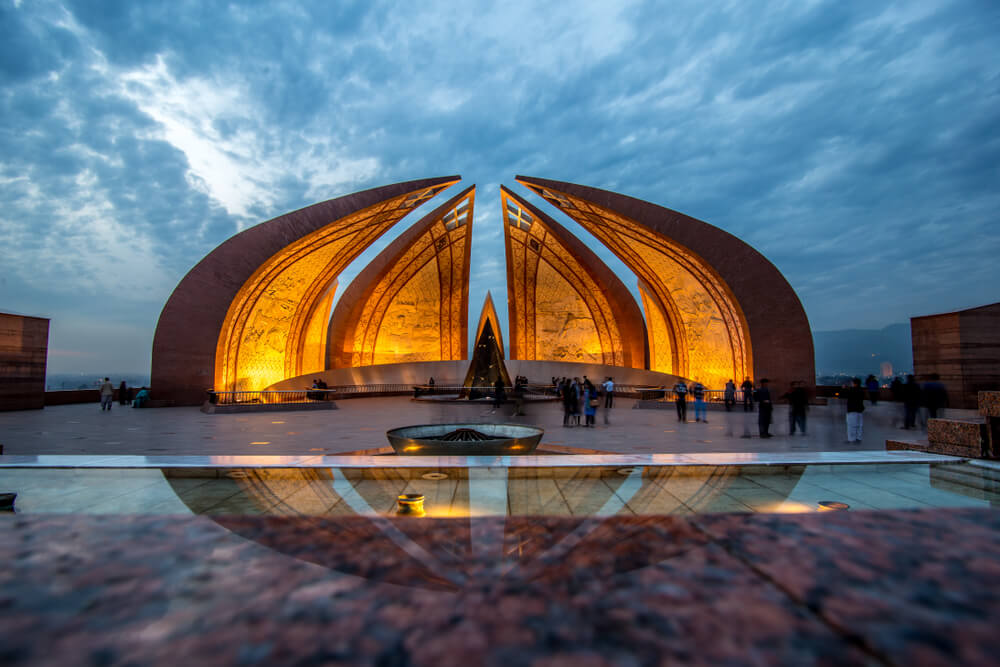
With 0.57 million visitors in 2015, the complex averaged 1500 visitors per day. The star and crescent moon on the Pakistani flag is depicted in an aerial perspective of the Monument as a star (in the center) and a crescent moon (made by walls creating the petals).
The Architecture of Pakistan Monument Museum
The Monument’s architecture is influenced by Mughal architecture; the dome-shaped building is modeled by Mughal muqarnas. It is built on a roughly 2.8 hectares (6.9 acres) plot. But what we witness in the Monument is a fusion of history and technology as a polished and contemporary form of the Mughal muqarnas.
The design of the Monument represents Pakistani togetherness and unity. The two primary structures are the Monument and the Museum. The four central petals represent the Punjab, Sindh, Balochistan, and Khyber Pakhtunkhwa provinces and cultures. The minority of Azad Jammu and Kashmir are represented by the smaller petals, the contrary hand, which are from Gilgit-Baltistan.
The Quaid-e-Azam Mohammed Ali Jinnah and Allama Iqbal’s inspirational works are engraved on a stainless-steel moon crescent. The interior walls of the petals, which are made of granite and project in a suspended lateral shape, are covered with artwork that features numerous Pakistani monuments, including the Lahore Fort, Badshahi Mosque, Khyber Pass, and Minar-e-Pakistan.
Granite from Brazil and marble from Spain were imported to build the majestic building. The inside walls of the petals are decorated with exquisite artwork. They feature numerous famous Pakistani sites, such as the Minar-e-Pakistan, the Khyber Pass, the Badshahi Mosque, and the country’s struggle for freedom.
Structure of Pakistan Monument Museum
The imposing Monument’s architectural design honors our legacy, history, and culture. It is one of Islamabad’s most well-liked tourist spots because of its gorgeous setting and distinctive architecture. Additionally, their significant elevation is visible from the twin cities of Islamabad and Rawalpindi. As a result, it provides a window into Pakistan’s fascinating past and aids in observing and concentrating on Islamabad.
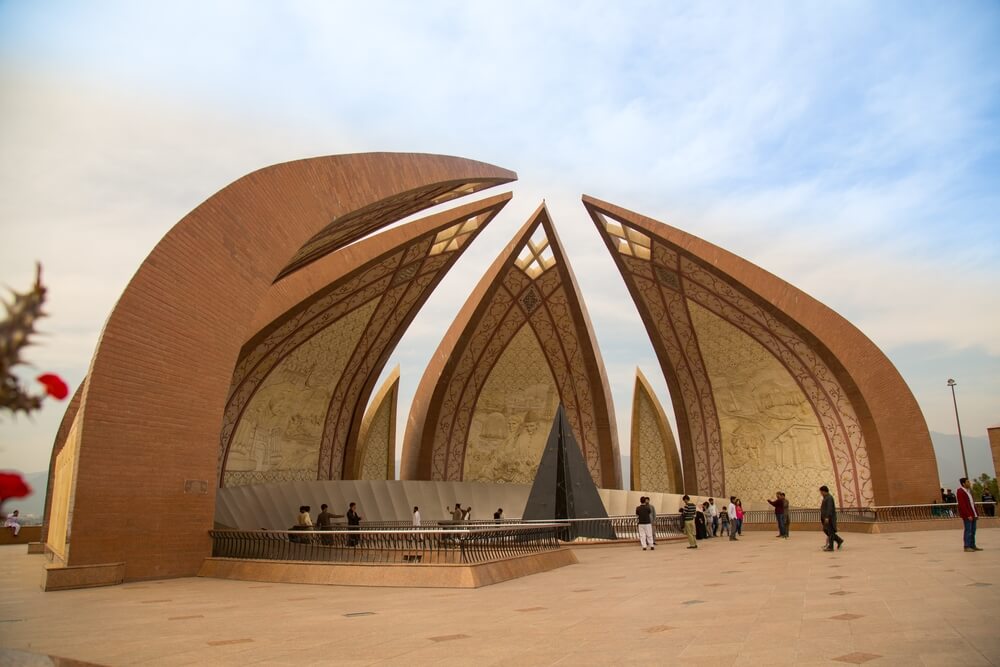
Attractions Offered by Pakistan Monument Museum
The Museum has large exhibitions, lifelike wax sculptures, lovely paintings, and historical images. These murals depict significant occasions that contributed to Pakistan’s formation. This fantastic Museum brings to historical life events such as the arrival of Islam in the area, the splendors of the Mughal dynasty, the War of Independence, and the Pakistan Movement. And there is more.
Along with an extensive reference library, the Museum in Islamabad also has an audio-visual center. You can locate historical speech archives and other governmental documents here. Panorama Hall also has an auditorium and a meeting room. It can accommodate 62 people in its seats.
You must visit this Museum in addition to the Pakistan Monument in Islamabad.
The renowned Lok Virsa Museum is also close by, popularly known as the Shakarparian Museum. If you’re interested in Pakistan’s cultural legacy and like art, set aside a whole day to visit the two museums, the Pakistan Monument in Islamabad.
While on a five-day tour, Prince William and Kate Middleton were welcomed to a supper at the National Monument in Islamabad. The British High Commissioner presented a uniquely painted motorized rickshaw. For her evening attire, Kate chose a bright, glistening emerald gown and classic jewels. Prince William was dressed in a knee-length sherwani and coordinating pants.
The Art Work on Petals
The inside of these petals is home to some truly unique artwork. These murals celebrate significant locations all around Pakistan while also telling the tale of Pakistan’s independence. These magnificent murals were the work of a group of artists led by Zarar Haider Babri and Kausar Jahan, who put in approximately 119,000 hours.
The 1st Petal Features
Beautiful murals depict the Faisal Mosque, the Makli Tomb in Sindh, Rohtas Fortress at Jhelum, the Shah Jahan Mosque in Thatta, and the harbor city of Gawadar on the initial petal of the historic site in Islamabad.
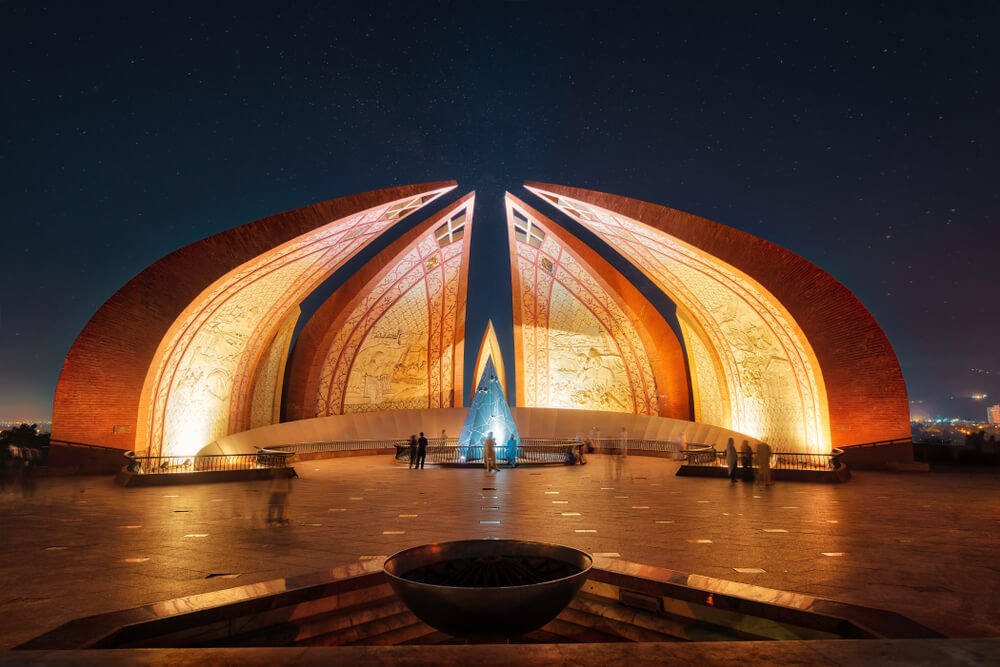
The 2nd Petal Features
Images of Fatima Jinnah and Quaid-e-Azam Muhammad Ali Jinnah can be seen in the second petal’s artwork. In addition, it shows the iconic Minar-e-Pakistan and Badshahi Mosque in Lahore, the Karakorum Highway in Pakistan’s northern region, and a crowd listening to Quaid-e-Azam.
The 3rd Petal Features
The third petal’s artwork features pictures of Pakistan’s National Poet, Allama Iqbal, Multan’s Shah Rukn-e-Alam Tomb, Peshawar’s famed Mahabat Khan Mosque, the Indus River Delta, and the beautiful Lahore Fort.
The 4th Petal Features
The Khyber Pass, Islamia College in Peshawar, Quaid-e-Azam Residency in Ziarat, Shalimar Bagh in Lahore, and other places are also sketched on the final petal.
Pillars
The Pakistan Monument in Islamabad has four pillars and a sizable fountain in the center of these granite petals. The phrases “Faith,” “Unity,” and “Discipline” are displayed in both Urdu and English in these structures. A wall displays the handprints of each designer, architect, engineer, and worker who contributed to the building’s creation.
A round terrace with gorgeous archways is a viewpoint right adjacent to the main Monument. You can view the entire city from here, such as the metallic crescent on the Shakarparian Hills that bears Quaid-e-quotations Azam’s and Allama Iqbal’s poetry etched on it.
Pakistan Monument is one of the most stunning tourist destinations in the federal capital due to its location and lovely green gardens.
Statues of Great Leaders
The sculptures of famous non-Muslims and British emperors were destroyed and taken down in the immediate wake of Partition when tensions were high, and colonialism was still our fiercest adversary. One can only speculate as to what drove those who committed the destruction.
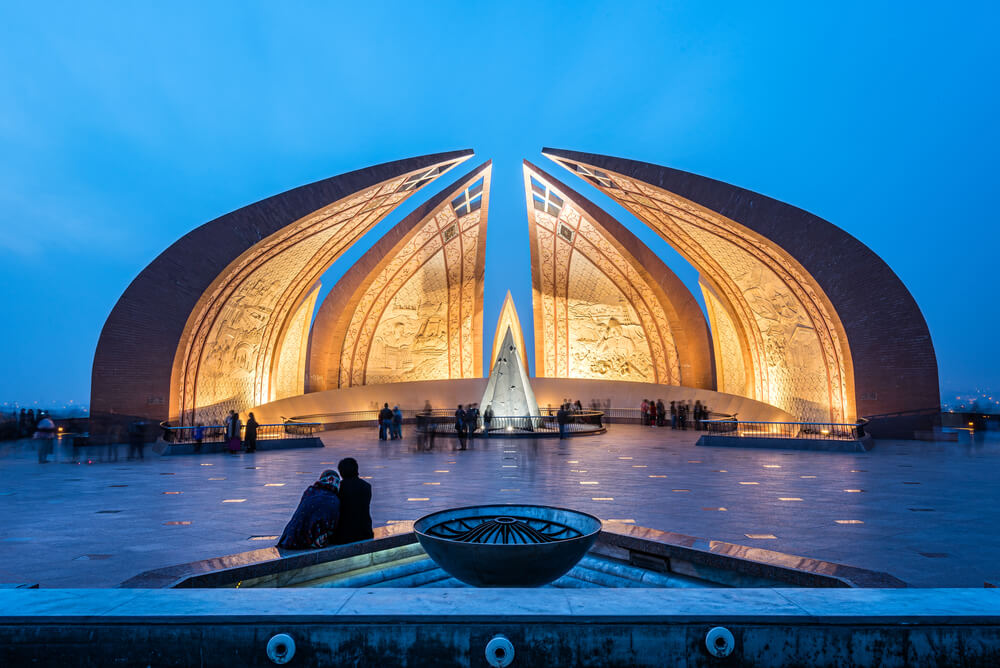
The legacy museum contains several photographs, wax statues of historical personalities, and other images. It is a chronology of human history from 7000 BC to 1947.
It discusses the beginnings of Islam, the Mughal era, the pre-partition past of the Pakistan movement, and the important occasions that contributed to the division of the subcontinent.
Reference Library
The Pakistan Monument Museum, which is close to the Monument and has a wax museum with representations of significant occasions that led to the Pakistan Movement, is nearby. A reference library is also included in the facility.
It is a legitimate archive of all of Pakistan’s published literary legacy. It serves as the country’s leading knowledge resource center and the starting point for new library construction. The library works to create an extensive collection of human knowledge, a comprehensive repository of national literary heritage, and to provide top-notch library services to advance Pakistan’s knowledge-based society.
The library maintains the nation’s literary history for current and future generations and is responsible for national bibliographic management. The primary collection of the National Library of Pakistan includes a sizable number of books written by Pakistanis who live abroad and writings about Pakistan, its culture, and its people. A sizable portion of the collection comprises documents and old books.
The Gallery has Pictorial Information about Heroic Wars.
The Gallery specializes in modern, small, and contemporary art. Its collection has over 1,000 pieces by 100 distinct Pakistani artists, making it a great place to learn more about the country’s contemporary art scene. Each month, Canvas Art hosts two shows in addition to the permanent collection.
The nation’s largest and oldest collection of historical, cultural, and artistic artifacts is housed in this structure. The world is aware of its treasures of ancient coins, miniature paintings, rare manuscripts, and Gandhara sculptures.
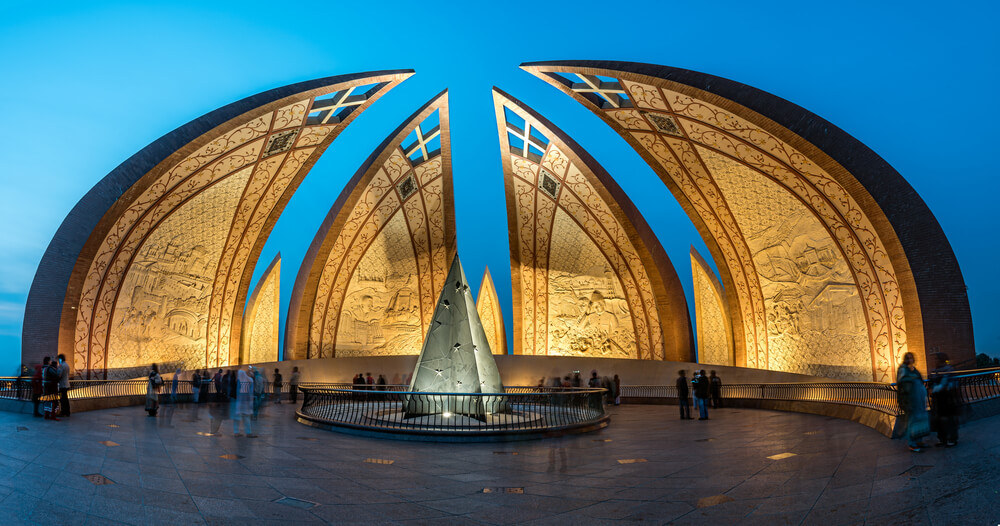
A visitor named Sajjad Khan claimed that the Museum’s historical visual archive made it alluring for students. He said that the Museum’s treasures from Allama Muhammad Iqbal and Quaid-e-Azam Muhammad Ali Jinnah were what drew visitors.
The Gallery of Arms and Swords
Various Hindu, Muslim, Sikh, and later British-period weapons are displayed in the Arms and Armaments exhibit. It includes arrows, sacrificial dahs (swords), and other implements. Sticks bent swords with carbon steels bathed in black water, simple or carved armor kits, inlaid and enameled helmets, metal coats and caps, chest shields, and arm and leg guards are some examples of armaments from the Muslim era. Knives, daggers, spears, and lances are weapons from the Sikh period.
Pakistan Monument Islamabad Ticket Price
Visiting the Monument is very inexpensive. It is only 50 RS per person for adults. Since it is a national monument, the government encourages the public to visit it and pay tribute to the brave hearts of Pakistan. Foreigners will have to pay a ticket price of Rs. 500. Children under the age of 7 years are admitted free.
Pakistan Monument Islamabad Timings & Visiting Days
Pakistan Monument can be visited between 10:00 AM to 8:00 PM.
Location & Contact Info
M3V9+2Q9 Shakarparian Hills، Srinagar Hwy, Islamabad, Islamabad Capital Territory
You can contact the administration at (051) 9249214 for more details.
FAQs
Why is Pakistan Monument famous?
Pakistan monument signifies the unity of Pakistani people. It is located on a heightened ground where you can easily see it from far away. It is dedicated to the Bravehearts to sacrifice their today for future generations. It is a mater piece designed by Arif Masoud.
When was the Pakistan monument built?
The Pakistan monument was constructed in March 2007, after which it was open to the public and became a popular tourist destination in the twin cities.
How to visit Pakistan Monument?
Pakistan monument is easily accessible. M3V9+2Q9 Shakarparian Hills، Srinagar Hwy, Islamabad, Islamabad Capital Territory. Since it is located on a heightened venue, it can be easily spotted from far away on the Srinagar highway.
Who made Pakistan Monument?
The architect who came up with the beautiful design of the Pakistan monument is Arif Masoud, aka Art Work by Gochrung. Engineer Syed Mahmud Khalid carried out the construction and completed it in a short time.
How long did the construction of the Pakistan Monument take?
With the incredible efforts of everyone involved in the task, the Pakistan monument was completed in 3 years. The construction began in May 2004, and the facility was inaugurated on March 23, 2007.
